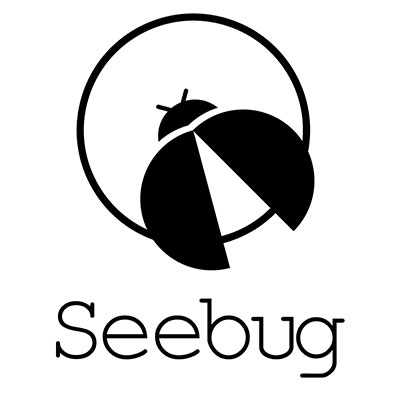# ICS Advisory (ICSA-20-056-05)
## Honeywell WIN-PAK
Original release date: February 25, 2020
[Print Document](javascript:window.print\(\);)
[Tweet](https://twitter.com/share?url=https%3A%2F%2Fus-
cert.cisa.gov%2Fics%2Fadvisories%2Ficsa-20-056-05)
[Like Me](https://www.facebook.com/sharer.php?u=https%3A%2F%2Fus-
cert.cisa.gov%2Fics%2Fadvisories%2Ficsa-20-056-05)
[Share](http://www.addthis.com/bookmark.php?url=https%3A%2F%2Fus-
cert.cisa.gov%2Fics%2Fadvisories%2Ficsa-20-056-05)
### Legal Notice
All information products included in [https://us-cert.gov/ics](/ics) are
provided "as is" for informational purposes only. The Department of Homeland
Security (DHS) does not provide any warranties of any kind regarding any
information contained within. DHS does not endorse any commercial product or
service, referenced in this product or otherwise. Further dissemination of
this product is governed by the Traffic Light Protocol (TLP) marking in the
header. For more information about TLP, see [https://www.us-
cert.gov/tlp/](/tlp/).
* * *
## 1\. EXECUTIVE SUMMARY
* **CVSS v3 8.1**
* **ATTENTION:** Exploitable remotely
* **Vendor:** Honeywell
* **Equipment:** WIN-PAK
* **Vulnerabilities:** Cross-site Request Forgery, Improper Neutralization of HTTP Headers for Scripting Syntax, Use of Obsolete Function
## 2\. RISK EVALUATION
Successful exploitation of these vulnerabilities allows an attacker to perform
remote code execution.
## 3\. TECHNICAL DETAILS
### 3.1 AFFECTED PRODUCTS
The following versions of WIN-PAK, a monitoring platform, are affected:
* WIN-PAK 4.7.2, Web and prior versions
### 3.2 VULNERABILITY OVERVIEW
#### 3.2.1 [CROSS-SITE REQUEST FORGERY
CWE-352](https://cwe.mitre.org/data/definitions/352.html)
The affected product is vulnerable to a cross-site request forgery, which may
allow an attacker to remotely execute arbitrary code.
[CVE-2020-7005](http://web.nvd.nist.gov/view/vuln/detail?vulnId=CVE-2020-7005)
has been assigned to this vulnerability. A CVSS v3 base score of 8.1 has been
calculated; the CVSS vector string is
([AV:N/AC:H/PR:N/UI:N/S:U/C:H/I:H/A:H](https://www.first.org/cvss/calculator/3.0#CVSS:3.0/AV:N/AC:H/PR:N/UI:N/S:U/C:H/I:H/A:H)).
#### 3.2.2 [IMPROPER NEUTRALIZATION OF HTTP HEADERS FOR SCRIPTING SYNTAX
CWE-644](https://cwe.mitre.org/data/definitions/644.html)
The header injection vulnerability has been identified, which may allow remote
code execution.
[CVE-2020-6982](http://web.nvd.nist.gov/view/vuln/detail?vulnId=CVE-2020-6982)
has been assigned to this vulnerability. A CVSS v3 base score of 6.3 has been
calculated; the CVSS vector string is
([AV:A/AC:L/PR:N/UI:N/S:U/C:L/I:L/A:L](https://www.first.org/cvss/calculator/3.0#CVSS:3.0/AV:A/AC:L/PR:N/UI:N/S:U/C:L/I:L/A:L)).
#### 3.2.3 [USE OF OBSOLETE FUNCTION
CWE-477](https://cwe.mitre.org/data/definitions/477.html)
The affected product is vulnerable due to the usage of old jQuery libraries.
[CVE-2020-6978](http://web.nvd.nist.gov/view/vuln/detail?vulnId=CVE-2020-6978)
has been assigned to this vulnerability. A CVSS v3 base score of 7.2 has been
calculated; the CVSS vector string is
([AV:N/AC:L/PR:N/UI:N/S:C/C:L/I:L/A:N](https://www.first.org/cvss/calculator/3.0#CVSS:3.0/AV:N/AC:L/PR:N/UI:N/S:C/C:L/I:L/A:N)).
### 3.3 BACKGROUND
* **CRITICAL INFRASTRUCTURE SECTORS:** Multiple
* **COUNTRIES/AREAS DEPLOYED:** Worldwide
* **COMPANY HEADQUARTERS LOCATION:** United States
### 3.4 RESEARCHER
Honeywell reported these vulnerabilities to CISA.
## 4\. MITIGATIONS
Honeywell recommends users with potentially affected products take the
following steps to protect themselves:
* Update WIN-PAK to latest version, WIN-PAK 4.7.2 B1072.3.4, before applying the patch, which is available on the [Honeywell Mywebtech portal](https://mywebtech.honeywell.com/Systems/Home).
* As a best practice, Honeywell recommends users isolate systems from the Internet or create additional layers of defense to their system from the Internet by placing the affected hardware behind a firewall or into a DMZ.
* If remote connections to the network are required, consider using a VPN or other means to ensure secure remote connections into the network where the device is located.
CISA recommends users take the following defensive measures to minimize the
risk of exploitation from social engineering attacks:
* Do not click web links or open unsolicited attachments in email messages.
* Refer to [Recognizing and Avoiding Email Scams](https://www.us-cert.gov/sites/default/files/publications/emailscams_0905.pdf) for more information on avoiding email scams.
* Refer to [Avoiding Social Engineering and Phishing Attacks](https://www.us-cert.gov/ncas/tips/ST04-014) for more information on social engineering attacks.
CISA reminds organizations to perform proper impact analysis and risk
assessment prior to deploying defensive measures.
CISA also provides a section for [control systems security recommended
practices](https://www.us-cert.gov/ics/recommended-practices) on the ICS
webpage on [us-cert.gov](https://www.us-cert.gov/ics). Several recommended
practices are available for reading and download, including [Improving
Industrial Control Systems Cybersecurity with Defense-in-Depth
Strategies](https://www.us-
cert.gov/sites/default/files/recommended_practices/NCCIC_ICS-
CERT_Defense_in_Depth_2016_S508C.pdf).
Additional mitigation guidance and recommended practices are publicly
available on the [ICS webpage on us-cert.gov](https://www.us-cert.gov/ics) in
the Technical Information Paper, [ICS-TIP-12-146-01B--Targeted Cyber Intrusion
Detection and Mitigation Strategies](https://www.us-cert.gov/ics/tips/ICS-
TIP-12-146-01B).
Organizations observing any suspected malicious activity should follow their
established internal procedures and report their findings to CISA for tracking
and correlation against other incidents.
No known public exploits specifically target these vulnerabilities. High skill
level is needed to exploit.


暂无评论